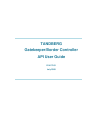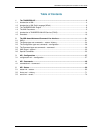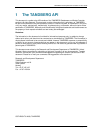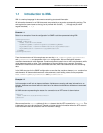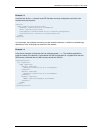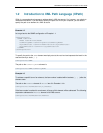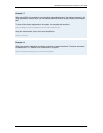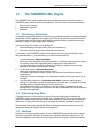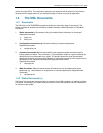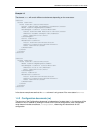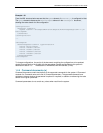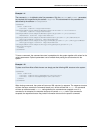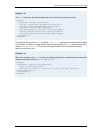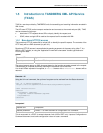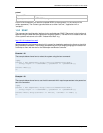
TANDBERG Gatekeeper/Border Controller API User Guide
D14172.01 page 9 of 84
monitor by using XPath. The user/control application can therefore limit the amount of information it
receives from the target system to only those parts being of interest for the given application.
1.4 The XML Documents
1.4.1 Documents
The XML Data in the TANDBERG systems are divided into three main types of documents. The
division is based on whether the information is Read Information, Write Information or Read-Write
information:
1. Status documents (r): Documents holding all available Status Information in the system.
Supported documents:
a. status.xml
b. history.xml
2. Configuration documents (rw): Documents holding all system configurations.
Supported documents:
a. configuration.xml
3. Command documents (w): Documents defining the supported system commands used to
initiate system processes. This is write data, i.e. the parameter values for a given command are
defined by the user and posted to the system. The posted values will not be returned when
reading the document from the system. Reading a command document from the system returns
descriptions of the supported commands with empty parameter values.
Supported documents:
a. command.xml
4. Meta Documents: Meta documents contain information that can be referenced by other
documents, e.g. value domains of configurations or command parameters. Supported Meta
Documents:
a. valuespace.xml
1.4.2 Status Documents (r)
The Status Documents are characterised by an extensive use of XML attributes. In addition to holding
information, the attributes are used to reflect the structure of the sub-elements, which are dependent
on the state of the system.



